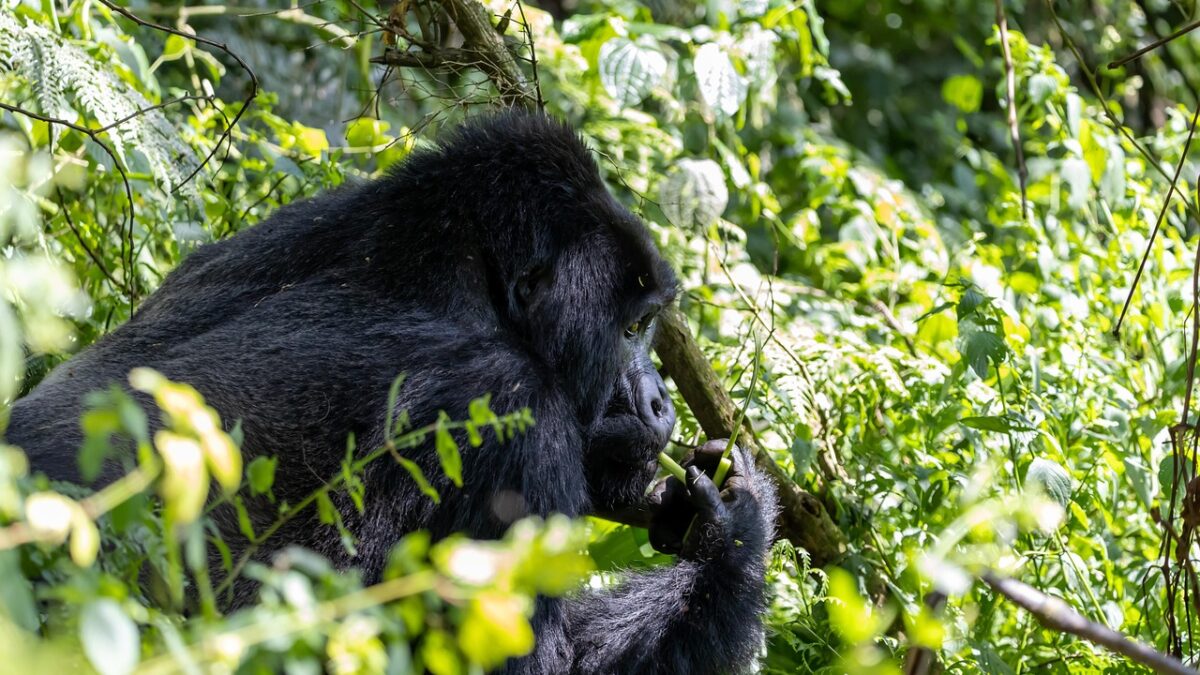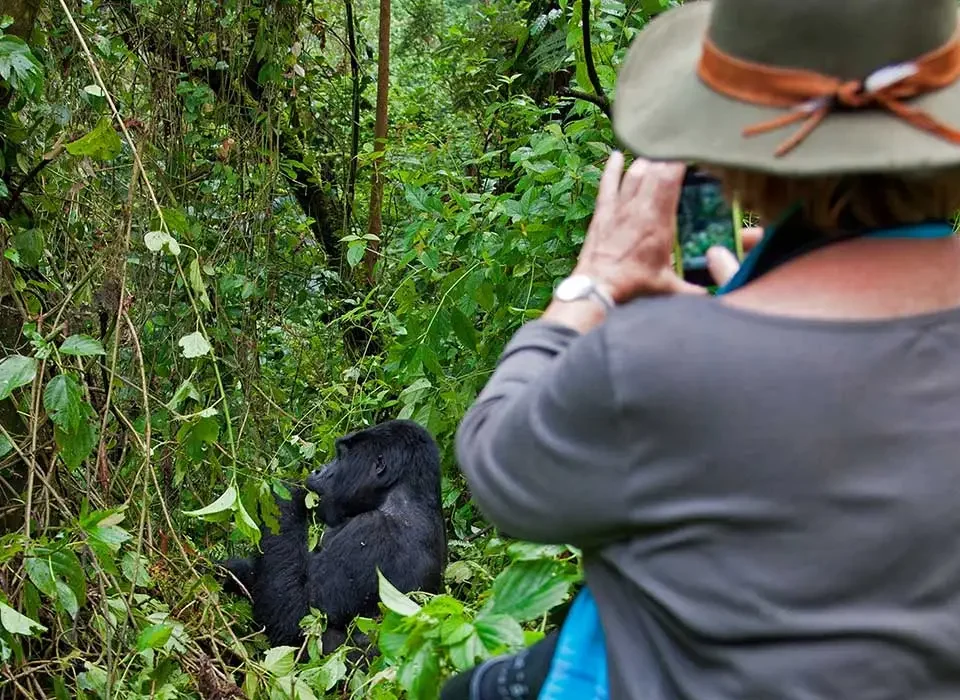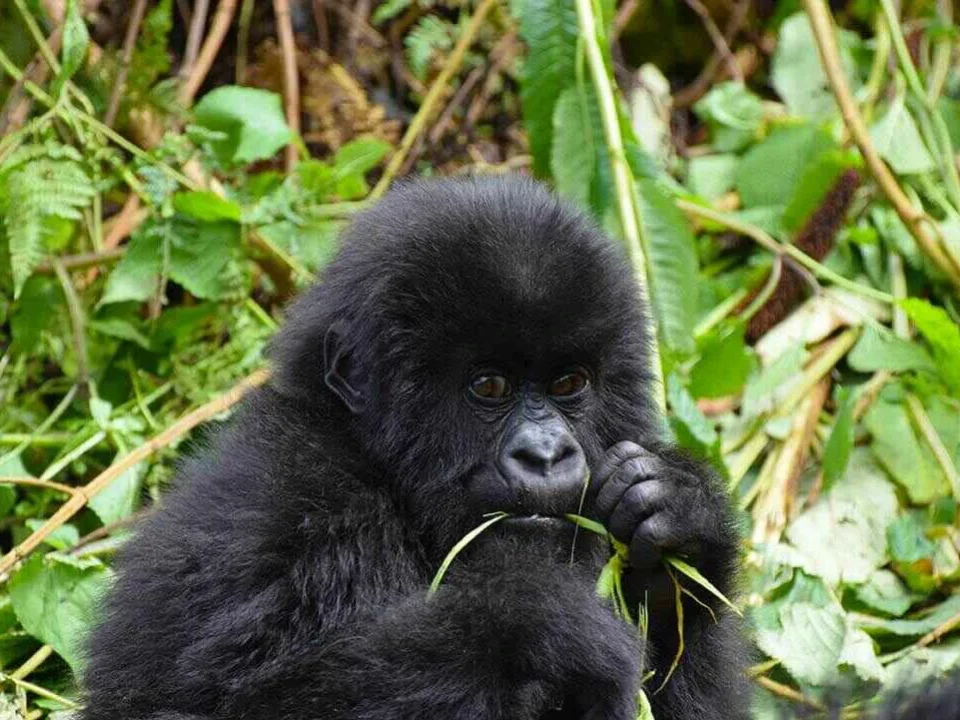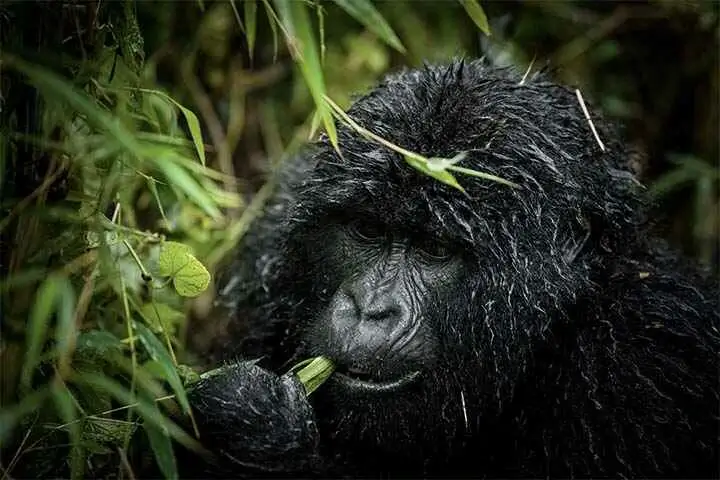
Top 5 National Parks for Game Viewing in Uganda
May 1, 2025
How Gorilla Trekking Works, A Step-by-Step Journey
July 22, 2025Gorilla trekking is one of the most sought-after wildlife experiences in the world. This once-in-a-lifetime adventure allows you to come face-to-face with the majestic mountain gorillas in their natural habitat—deep in the misty rainforests of Uganda, Rwanda, and the Democratic Republic of Congo. It’s more than a safari; it’s a soul-stirring encounter with our closest relatives in the wild.
What Is Gorilla Trekking?
Gorilla trekking is the act of hiking through dense tropical forests to observe a family of wild mountain gorillas. These treks take place in protected national parks where gorillas are habituated to human presence. Led by experienced guides and rangers, trekkers follow trails in search of these gentle giants, often hiking for 1 to 6 hours depending on the gorillas’ location.
The trek typically begins early in the morning, with a mandatory briefing at the park headquarters. Groups of eight visitors are assigned to a habituated gorilla family. The journey through the forest varies in duration and intensity, depending on the gorillas’ location that day.
Where Does Gorilla Trekking Take Place?
The mountain gorilla population is limited to three countries:
- Uganda: Bwindi Impenetrable National Park and Mgahinga Gorilla National Park
- Rwanda: Volcanoes National Park
- Democratic Republic of Congo: Virunga National Park
Each destination offers a unique trekking environment:
- Bwindi is known for its dense vegetation and high-altitude terrain, providing a raw, immersive experience.
- Mgahinga offers breathtaking views of the Virunga Volcanoes and is home to the Nyakagezi gorilla group.
- Volcanoes in Rwanda provides a more accessible trek due to better infrastructure and shorter hike times.
- Virunga offers a more adventurous trek, often with fewer tourists, and a chance to explore Congo’s wilderness.
Why It’s a Bucket List Experience
1. Unparalleled Wildlife Encounter
Mountain gorillas share 98% of their DNA with humans. Watching them feed, groom, and interact feels like witnessing a mirror of humanity. You see the intelligence in their eyes, the bond between family members, and the complexity of their social behaviors.
2. Conservation Impact
Gorilla trekking plays a vital role in conservation. The permit fees contribute to the protection of the gorillas’ habitats, ranger patrols, research, and anti-poaching initiatives. Tourism has helped bring these magnificent creatures back from the brink of extinction.
3. Breathtaking Landscapes
Whether you’re trekking through Bwindi’s tangled rainforest or ascending Rwanda’s lush slopes, the journey itself is stunning. The parks are rich in biodiversity, offering glimpses of rare birds, butterflies, primates, and unique flora.
4. Adventure and Physical Challenge
The trek is physically demanding, often involving steep climbs and muddy paths. However, this physical challenge enhances the experience. Every drop of sweat makes the eventual sighting of gorillas more rewarding.
5. Cultural Interaction
Many trekking regions are home to indigenous communities such as the Batwa in Uganda and the Banyarwanda in Rwanda. Trekking offers opportunities to learn about their traditional lifestyles, beliefs, and conservation roles. Cultural tours can be added to your itinerary.
6. Exclusivity and Intimacy
Only a limited number of permits are issued daily, making each trek exclusive. Group sizes are capped at 8 people per gorilla family, ensuring an intimate, non-intrusive experience.
Who Can Go Gorilla Trekking?
Gorilla trekking is open to visitors aged 15 and above. It is suitable for anyone in reasonably good health. Porters are available to carry bags and assist with the hike. Visitors with physical limitations can opt for a sedan chair carried by porters (in Uganda), allowing inclusive access to this unforgettable experience.
Is Gorilla Trekking Ethical?
When conducted by licensed tour operators and regulated park authorities, gorilla trekking is ethical and sustainable. Strict rules ensure minimal disturbance to the gorillas:
- Keep a 7-meter distance
- No flash photography
- Wear a mask to prevent disease transmission
- Limit your interaction to one hour
Habituation processes take years and are carefully managed to ensure gorillas remain wild while tolerating limited human presence.
Tips to Make the Most of Your Trek
- Book in advance: Permits are limited and often sell out months ahead.
- Train for fitness: Prepare by walking or hiking in hilly terrain.
- Wear the right gear: Waterproof boots, gloves, long sleeves, and gaiters protect you from mud, insects, and vegetation.
- Hire a porter: They assist with gear and provide support, while your fee helps support local livelihoods.
- Carry essentials: Pack water, energy snacks, a poncho, and a good camera with extra batteries.
Conclusion
Gorilla trekking is not just an adventure—it’s a profound encounter with one of the most endangered and awe-inspiring animals on Earth. It connects you to nature, supports conservation, uplifts communities, and changes the way you see the world. At Exclusive Gorilla Journeys, we ensure your trek is meaningful, safe, and unforgettable. Book now and experience the magic of meeting mountain gorillas in the wild.




